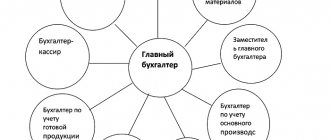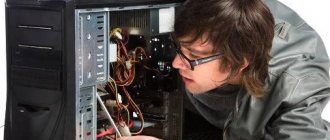What is this document
Occupational Safety Instruction (OSI) is a normative act containing a list of rules that representatives of certain positions and professions must follow. Since the document is aimed at creating safe conditions in the workplace, any violation may lead to unpleasant consequences (accidents, harm to health, material damage, etc.). Therefore, it can be considered as a disciplinary offense.
The employer is responsible for developing and conducting training. If you look at it, many of its functions are related to labor protection. For example, purchasing personal protective equipment, investigating accidents, preventing emergencies, organizing medical examinations of personnel. Therefore, compliance with labor safety instructions is as mandatory for the director of an enterprise as it is for subordinates. IOT for management is provided when hiring, changing or introducing new rules. Consists of the following sections:
- general safety requirements;
- procedure before starting work;
- safety rules during performance of work duties;
- what to do in the event of an emergency;
- procedure for completing work.
You can for free (as an example). Let's take a closer look at the structure of this document.
II. SAFETY REQUIREMENTS BEFORE STARTING WORK
2.1. Before starting work, the director (manager) must:
— check the serviceability of electric lighting in the office;
- ventilate the office room;
— prepare the workplace;
— adjust the lighting in the workplace, make sure there are no glares on the computer screen;
— check that the equipment is connected correctly to the electrical network;
— check the serviceability of computer equipment;
— check the serviceability of the power wires and the absence of exposed wire sections.
Safety rules before/during/after work
What basic (basic) safety rules should the director follow based on the labor protection instructions? Let's list them point by point.
1. Before starting work functions, the manager must check the serviceability of lighting, equipment, computer equipment and prepare the workplace. If the office is stuffy, you need to ventilate the room or turn on the air conditioner.
2. During work, safety and personal hygiene rules must be observed. The office must be kept in complete order; it is unacceptable to clutter it with books, papers and other foreign objects. If the director needs to travel, for example, to a meeting with a client, the equipment cannot be left in working condition. When visiting production sites, he must use protective equipment.
3. At the end of the working day, the manager must turn off all electrical appliances, equipment, close the windows and turn off the lights. It is imperative to check whether there is a risk of fire.
Standard instructions on labor protection for directors
Updated 04/11/2019
Briefly about the development of instructions
For the director - the head of the organization - instructions are also being developed containing a set of regulatory requirements and safety rules. By the way, it is the standard instructions on labor protection for the director that are developed first, since the director is the first person in the organization and is obliged to set an example for his subordinates with regard to compliance with labor protection requirements. Labor safety instructions for a manager are developed taking into account the specifics of his work in a particular organization.
Let's look at an example of filling out OT instructions for a director.
- General safety requirements. A person at least 18 years of age with a higher professional education and at least 5 years of experience in a leadership position in an organization in a similar line of activity can be appointed as a director. The director is obliged to: - Know the regulatory requirements and legislative acts on the basis of which the production, economic and financial and economic activities of his organization are carried out. — Know the methodological materials and regulatory requirements of government bodies related to the company’s activities; — Know the profile, organization, features of work and structure of the enterprise; — Know the human resources, production capacities and technological processes of the enterprise; — Know labor legislation, labor organization, rules and regulations of labor protection; — Know your job responsibilities and labor safety instructions; — Complete induction and initial training at the workplace; — Comply with the company’s internal regulations, work and rest schedule; — Monitor compliance with regulations, safety precautions and work and rest regimes among personnel; — Conduct briefings in accordance with labor protection legislation; - Maintain order in the workplace. — The director must notify the executive director about all accidents occurring in the organization, about a threat to his or her health or the health of the company’s employees.
- OT requirements before starting work. The manager (director) must prepare the workplace: ventilate the room, check the serviceability of electric lighting, equipment, power cables, equipment connections; adjust lighting and monitor screen.
- OT requirements during work. During the working day, the director must comply with the rules of personal hygiene, fire safety and occupational safety, maintain order, not clutter the workplace with papers and foreign objects - all documentation must be stored in specially designated places. It is prohibited to use faulty equipment or leave switched on equipment unattended.
- Safety requirements in emergency situations. In the event of an emergency, it is necessary to immediately notify the organization's employees about it and act in accordance with the requirements of the documents on the elimination of the accident and its consequences. In case of fire, call the fire brigade, evacuate people, and take measures to extinguish the fire. Provide first aid to the victims and, if necessary, call a doctor. In situations that threaten life and health, leave the dangerous area.
- OT requirements upon completion of work. At the end of the working day, the director must tidy up the workplace, check the fire safety condition of the premises, turn off electrical appliances and operating equipment, and close the door.
You can on our website.
It is important to understand that labor safety instructions are best developed not by an occupational safety engineer, but by the head of a department. The reason is simple: the person who does the job every day knows the job best. It is necessary to use the methodological recommendations of the Ministry of Labor dated May 13, 2004. Help from an occupational safety engineer will still be useful.
Who develops and how is IOT approved?
According to Art. 212 of the Labor Code of the Russian Federation, the development and approval must be carried out by the employer. It is important that there is full compliance with labor law standards, so you can attract specialists who understand the specifics of labor functions. You can also entrust this task to the heads of structural divisions. Take Methodological Recommendations of the Ministry of Labor of the Russian Federation No. 80 as a basis.
How the document is developed:
- The head of the enterprise issues an order stating the instructions to develop instructions. A list of documents must be attached.
- The IOT is submitted to a full-time specialist for approval.
On the title page of the occupational safety instructions for the director of the enterprise, the name of the organization, date and information about the persons involved in the approval are written. If there is only one copy, the original is transferred for storage to the labor protection service, and a copy remains with the employer. If there are several, each of them is recorded in a special journal.
OT instructions for the Deputy Director for HR
AGREED: I CONFIRM:
Chairman of the PC Director of MOBU
INSTRUCTIONS
on labor protection for the deputy director for HR
IOT-008-2014
- General labor protection requirements
- To work as a deputy Director of VR admits persons with higher professional education, at least five years of work experience in teaching or management positions, and who have passed a medical examination.
- Deputy In his work, the Director of VR must:
- know and fulfill their job responsibilities, labor protection, safety, and fire safety instructions;
- undergo induction and initial training at the workplace;
- comply with internal labor regulations;
- comply with established work and rest schedules (according to the work schedule);
- comply with personal hygiene requirements, keep the workplace clean;
- ensure compliance with the norms and rules of labor protection, protection of life and health of children during the organization of the educational process with students.
1.3. When performing official duties, the deputy Director of VR may be exposed to the following harmful production factors:
- electric shock when turning on electric lighting or using faulty electrical appliances;
- electric shock when turning on and using TSO equipment;
- impaired visual acuity in insufficient illumination of the workplace, as well as visual fatigue during prolonged work with documents and on the computer;
- ionizing, non-ionizing radiation and electromagnetic fields when working on a computer. In the event of an accident, the victim or an eyewitness to the accident is obliged to immediately notify the director of the educational institution; if the equipment malfunctions, stop work and inform the director or his deputy for administrative and chemical work.
- Deputy The director of fire control is obliged to comply with the fire safety regime of the OS, fire safety rules, know the location of primary fire extinguishing equipment, as well as the directions of evacuation in case of fire.
- In case of non-compliance or violation of labor protection instructions, deputy. The director for water management is subject to disciplinary liability in accordance with the internal labor regulations and, if necessary, is subjected to an extraordinary test of knowledge of labor protection standards and regulations.
- Labor protection requirements before starting work
2.1. Check the serviceability of the electric lighting in the office.
2.2. Ventilate the office room.
2.3. Check workplace safety.
2.4. Check the serviceability of the electrical outlet and other electrical appliances.
- Labor protection requirements during work
3.1. Comply with personal hygiene and occupational safety requirements.
3.2. When working, use only serviceable TSO equipment and office equipment.
3.3. Maintain cleanliness and order in the workplace.
3.4. Maintain order and do not clutter the workplace or escape routes with papers, books, foreign objects, etc.
3.5. Observe fire safety rules, know escape routes in case of fire, be able to use primary fire extinguishing agents (powder fire extinguisher).
3.6. If there is insufficient illumination of the workplace, use a table lamp for additional illumination.
3.7. When working with office equipment (computer, copier, etc.), TSO, observe safety precautions against electric shock:
- do not connect or disconnect devices from the power supply with wet or damp hands;
- observe the sequence of turning on and off office equipment, TSO, and do not disrupt technological processes;
- Do not leave devices plugged in unattended, especially when working with office equipment.
3.8. When working with a computer, follow the “Occupational Safety Instructions for Working on a Personal Computer,” and when working with a copier, follow the “Occupational Safety Instructions for Operating a Copier.”
3.9. To maintain a healthy microclimate, the room should be ventilated every 2 hours; When opening the transom, be extremely careful when fixing it in the open state.
3.10. When working with documents and on a computer for a long time, in order to reduce fatigue of the visual analyzer, eliminate the influence of physical inactivity and hypokinesia, and prevent the development of postural fatigue, after every hour of work, take a break for 10-15 minutes, during which you should perform a set of exercises for the eyes, physical training breaks and minutes.
- Safety requirements in emergency situations
4.1. In the event of emergency situations, urgent measures should be taken, immediately provide first aid to the victim, inform the director of the educational institution about this, and, if necessary, send the victim to the nearest medical facility by calling 03.
4.2. Do not start work if you feel unwell or suddenly become ill.
4.3. In the event of a malfunction in the operation of a computer, copier, or TSO (extraneous noise, sparking and burning smell), immediately disconnect the electrical device from the power supply and inform the director or his deputy for administrative and administrative work; continue work only after the problem has been eliminated.
4.4. If a fire occurs, immediately notify the director and the nearest fire department by calling 01, and begin evacuating students to the evacuation site (according to the evacuation plan).
4.5. If injured, immediately seek medical attention from the medical office and notify the director.
- Safety requirements after completion of work
5.1. Ventilate the office, close the window.
5.2. Tidy up your workspace.
5.3. Turn off electrical appliances, TSO equipment, and office equipment.
5.4. Turn off the electric lights and lock the office.
5.5. Report all shortcomings noted during work to the director and his deputy for the ACh.
Responsibility for lack of instructions
IOT refers to the list of mandatory documents that every organization must have. The labor inspectorate has the right to require it during inspection. Therefore, you must have labor safety instructions for the director, and not just for office workers.
Violators are held accountable under Part 1 of Art. 5. 27 Code of Administrative Offences:
- organization fine from 50 to 80 thousand rubles;
- individual entrepreneurs fine from 10 to 30 thousand rubles.
In case of repeated non-compliance, the penalty increases to 100-200 thousand rubles. and 30-40 thousand rubles, respectively. Suspension of activities for up to three months is also possible.
Who exactly should do this? Special person?
This can be done by a special person - a labor protection specialist. But not all institutions have it. Also, according to the law, instructions can be given by a manager or other authorized person. The main thing is that he has a certificate, that he has undergone training and confirmed his knowledge of labor protection. Simply assigning yourself responsibility and reading the instructions is not enough.
Occupational safety training is provided by accredited training centers.
Procedure for training on labor protection
Shelf life
Typically, occupational safety instructions for directors and office workers are kept for five years. If after this period no fundamental changes have occurred, that is, working conditions and safety requirements remain the same, no adjustment is required. The leader does this:
- Issues the appropriate order.
- On the title page of the labor safety instructions for the director, the details of the order are indicated and the “Revised” mark is placed.
- The signatures of the persons responsible for the revision are affixed.
However, in practice such situations rarely occur. Usually it is necessary to make changes, and in some cases even update the IOT ahead of schedule. For example, when revising intersectoral safety rules, investigating emergency incidents or occupational diseases, at the request of the State Inspectorate.
If you find an error, please select a piece of text and press Ctrl+Enter.
III. SAFETY REQUIREMENTS DURING OPERATION
3.1. During work, the director (manager) must:
— observe the rules of personal hygiene and occupational safety;
— use working computer equipment when working;
- maintain cleanliness and order in the workplace;
- do not clutter the workplace with papers, books, etc.;
— comply with fire safety rules;
— comply with safety requirements when working with computer equipment;
— Leaving operating equipment unattended is prohibited.
3.2. Store documentation in cabinets in a specially equipped office.
3.3. When visiting production sites, the director (supervisor) is required to use personal protective equipment.







